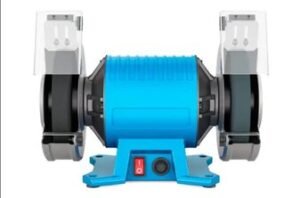
Agilios Camera United States: Technology Revolutionizing Inspection Standards in the United States
The recent 2000-word article on Agilios Camera systems presents a compelling deep dive into how this advanced inspection technology is reshaping infrastructure assessment and industrial maintenance practices across the United States. The review highlights key elements such as technological advancements, use-case versatility, and its growing footprint within both public and private sectors.
Cutting-Edge Design and Functionality
The article starts by detailing the engineering excellence behind the Agilios camera system. Designed for high mobility and adaptability, the system’s modular build allows for rapid deployment in challenging environments like sewer lines, industrial pipelines, and power plants. The camera’s pan-and-tilt capabilities, coupled with high-definition imaging and robust lighting, make it a leader in visual inspection tools. Its intuitive control unit and durable construction make it suitable for a wide range of inspection tasks, including those in hazardous or hard-to-reach areas.
U.S. Adoption on the Rise
One of the central themes of the article is the growing adoption of Agilios camera technology across the United States. The system has seen increasing use among municipal utility departments, infrastructure maintenance crews, and environmental inspection agencies. The article provides multiple examples where the camera’s deployment led to early detection of structural issues, resulting in cost savings and safety improvements. The camera’s ability to document and archive inspections also supports regulatory compliance and long-term asset management.
Impact on Infrastructure Maintenance
The review emphasizes the Agilios camera’s impact on enhancing the quality and speed of infrastructure inspections. By minimizing the need for manual entry into confined spaces, the system improves worker safety and reduces operational downtime. In several case studies cited, cities using the Agilios system were able to identify pipeline corrosion and root intrusion problems that had gone unnoticed with older technology. The result was faster repairs and more targeted use of maintenance resources.
Technical Strengths and Innovations
Beyond its practical applications, the article dives into the technological innovations that set the Agilios camera apart. These include its remote-control interface, adaptable crawler options, and advanced image processing features. The system supports real-time video streaming and data logging, enabling teams to make quick, informed decisions in the field. The integration of GPS and location mapping tools further enhances its utility for large-scale inspections.
Environmental and Economic Benefits
Another key takeaway from the article is the system’s contribution to sustainable operations. By enabling non-destructive testing, the Agilios camera helps reduce unnecessary excavation or demolition. This aligns well with green initiatives in urban planning and infrastructure development. Economically, the camera’s efficiency leads to lower long-term costs for maintenance and emergency repairs.
Challenges and Future Outlook
While the article praises the Agilios camera’s capabilities, it also notes potential limitations such as high initial investment costs and the need for trained operators. However, these challenges are largely mitigated by the system’s long-term value and ease of use. The article concludes with a forward-looking perspective, predicting increased integration with AI and data analytics, further enhancing its role in predictive maintenance.
Final Thoughts
This comprehensive article presents the Agilios camera as a game-changer for infrastructure inspection in the United States. It successfully blends technical detail with practical case studies, illustrating why this technology is rapidly becoming a standard in modern inspection protocols. As cities and industries aim for smarter, safer, and more efficient operations, the Agilios camera stands out as a powerful tool driving that progress.






![Swimsuit Edition [Abbb] - 1.20 21 Swimsuit Edition - Chapter](https://www.geniussclick.com/wp-content/uploads/2025/07/rsz_swimsuit_edition_abbb_-_120_21_swimsuit_edition_-_chapter-300x199.jpg)





Post Comment